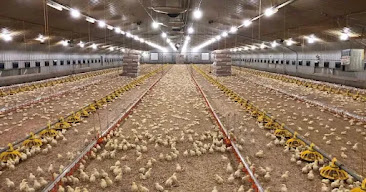Litters are absorbent materials, typically in granular form, straw, or other plant materials used as bedding for animals. Every poultry pen floor is expected to be filled with litter, mostly deep-liter systems. These help in absorbing the moisture from the bird's pop and make the pen clean and safe from disease manifestation.
Why are litters significant in poultry management?
It's a known fact that poultry birds take in food and water, process it in their body systems, and release it out through their vents. Once this is done, the process continues not only for one bird, but for all. To avoid air pollution and to make the pen easy to clean, litter is introduced into the pen as an absorbent and also as a layer to protect the floor from being stocked with the feces of the birds.
What are the implications of bad litter?
Bad litter causes numerous complications for the farmers in the farm house. Starting with the moisture, the pen always gets wet quickly, more like water is being poured on the floor nonstop, which will make the room uncomfortable for the birds, and likewise, the farmer, whose stress is increased with regular cleaning. Furthermore, it harbors numerous diseases, which leads to an increase in disease transmission among the birds. This happens as soon as there is ammonia buildup inside the pen.
What type of litter is best for poultry pens?
There are several available litters being used by farmers; some are bad and some are good. Straws, sawdust, wood shavings, rice husks, shafts, and other agricultural litters are examples. All the mentioned litters being used by farmers, only one is generally accepted as the best of them all, which is wood shavings. Some mistake wood shavings for sawdust; both are different. Sawdust is harmful to birds, mostly chicks. It is observed that it causes chronic respiratory disease and also harbors numerous diseases associated with it. The rest of the litter's level of moisture retaining capacity is very low, which makes them unreliable for poultry pen floors.
How can I get good litter?
These never require any special tactics, so find them. As stated earlier, wood shavings are the best litter for poultry pen floors. To get wood shavings, all you need to do is visit any sawmill around you. If you are finding it difficult to find one, consult your carpenter to help you out with getting it. Some sawmills will give you this free of charge depending on the quantity, while most will charge you for it per sac.
Poor litter management is not an experience you would like to have. Once there is an outbreak inside the farm, tracing the source will be a bit difficult for the vet. To control the breakout will require tackling the litter first before any solution can be implemented to avoid recycling of the disease. If you have more questions or wish to share your experiences with us, kindly use the comment box.







